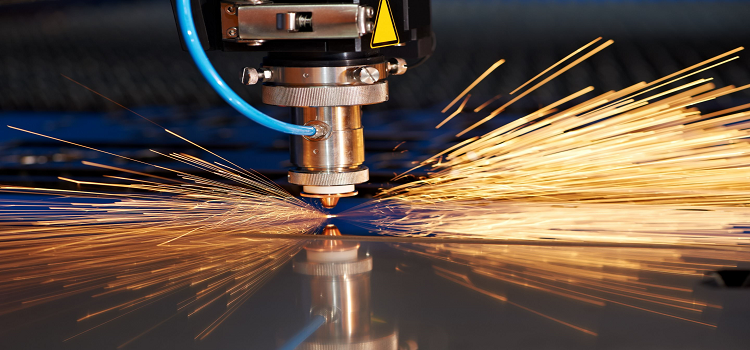Drilling into the Future: Assessing the Global CNC Drilling Machine Market
Introduction
A CNC drilling machine, also known as a computer numerical control drilling machine, is a precision machining tool used for drilling holes in various materials. It utilizes computerized controls and automated movements to accurately position and drill holes based on pre-programmed instructions.
CNC drilling machines are widely used in industries such as manufacturing, aerospace, automotive, and electronics. They offer numerous advantages over conventional drilling methods, including increased productivity, improved accuracy, reduced human error, and the ability to produce complex hole patterns. These machines are capable of drilling holes in a wide range of materials, including metals, wood, plastic, composites, and ceramics.
As technology continues to evolve rapidly, CNC drilling machines are poised for significant advancements in the upcoming years. From increased precision to the integration of cutting-edge technologies, the future of CNC drilling machines promises exciting developments that will revolutionize the manufacturing landscape. In this article, we explore some key trends that will shape the trajectory of the CNC drilling machine market in the near future.
1. The Growing Use of Virtual and Augmented Reality:
Virtual reality (VR) and augmented reality (AR) technologies are finding their way into various industries, and CNC drilling machining is no exception. In the coming years, manufacturers are likely to harness the power of these immersive technologies for designing, simulating, and optimizing machining processes. VR will enable engineers and operators to visualize and interact with CNC drilling machine setups before execution. This, in turn, will reduce errors and improve efficiency. Conversely, AR will enhance real-time data visualization and aid in on-the-job training to empower operators to work with a greater confidence and skill.
2. Increased Precision and Accuracy:
As industries demand higher precision and tighter tolerances, CNC drilling machines will evolve to meet these requirements. Advanced sensors, real-time feedback systems, and predictive algorithms will enhance the precision and accuracy of drilling operations. This, in turn, ensures flawless results even in the most demanding applications.
3. Greater Automation and Integration:
Automation continues to stay as a driving force behind CNC drilling machines. The integration of robotics, artificial intelligence (AI), and machine learning will lead to more autonomous and adaptive machines than before. These automated systems will reduce human intervention and enable self-optimization, self-calibration, and predictive maintenance. This, in turn, will enhance productivity and efficiency.
4. The Use of Alternative Materials:
In response to the growing focus on sustainability and lightweight design, manufacturers increasingly turn to alternative materials. CNC drilling machines must adapt to work with materials, such as composites, carbon fiber, and bio-based polymers. Advanced tooling and cutting strategies will be developed to address the challenges posed by these materials, offering new opportunities for innovation in the manufacturing realm.
5. The Rise of Additive Manufacturing:
Additive manufacturing, or 3D printing, is gaining momentum in various industries. The combination of CNC drilling machines with additive manufacturing processes will enable hybrid manufacturing. This, in turn, will allow the manufacturing of complex and customizable parts with a blend of traditional machining and additive techniques.
6. The Growing Use of Robotics:
The integration of robotics with CNC drilling machines will continue to rise. Collaborative robots, or cobots, will work alongside human operators, assisting in material handling, tool changes, and repetitive tasks. This human-robot collaboration will enhance productivity, safety, and overall manufacturing efficiency.
Conclusion:
The future of CNC drilling machines is brimming with innovation and potential. As industries seek greater efficiency, sustainability, and customization, CNC drilling machines will rise to the occasion. These machines will incorporate cutting-edge technologies and evolve to meet the demands of the modern manufacturing landscape. From virtual and augmented reality integration to the use of alternative materials and additive manufacturing, CNC drilling machines will continue to shape the future of manufacturing. They will also usher in a new era of precision, automation, and sustainability. Manufacturers and engineers must embrace these advancements to stay at the forefront of industry trends and maintain a competitive advantage in the global market.
About the author
 Sikha Haritwal is a researcher with more than 3 years of experience. She has been keeping a close eye on several industry verticals, including drugs and pharmaceuticals, personal care products, and consumer electronics. She has avid interest in writing news articles and hopes to use blog as a platform to share her knowledge with others. When she is not following industry updates and trends, she spends her time reading, writing poetry, cooking, and photography. The author can be reached at sikha.haritwal@nextmsc.com
Sikha Haritwal is a researcher with more than 3 years of experience. She has been keeping a close eye on several industry verticals, including drugs and pharmaceuticals, personal care products, and consumer electronics. She has avid interest in writing news articles and hopes to use blog as a platform to share her knowledge with others. When she is not following industry updates and trends, she spends her time reading, writing poetry, cooking, and photography. The author can be reached at sikha.haritwal@nextmsc.com


Leave a Reply